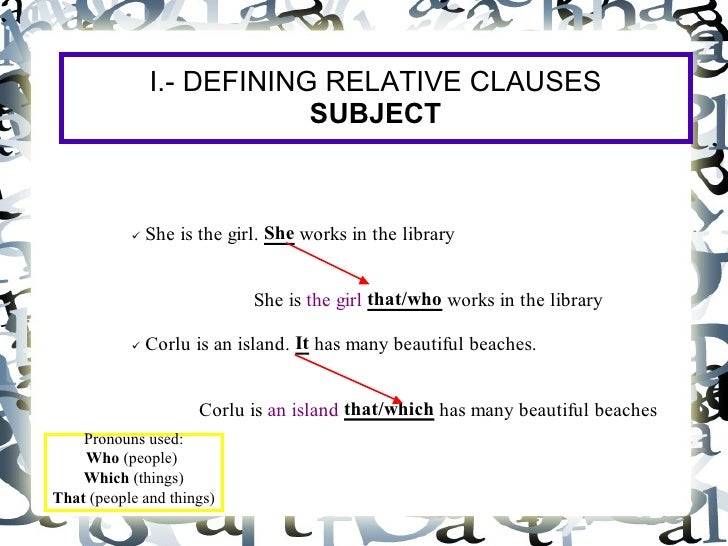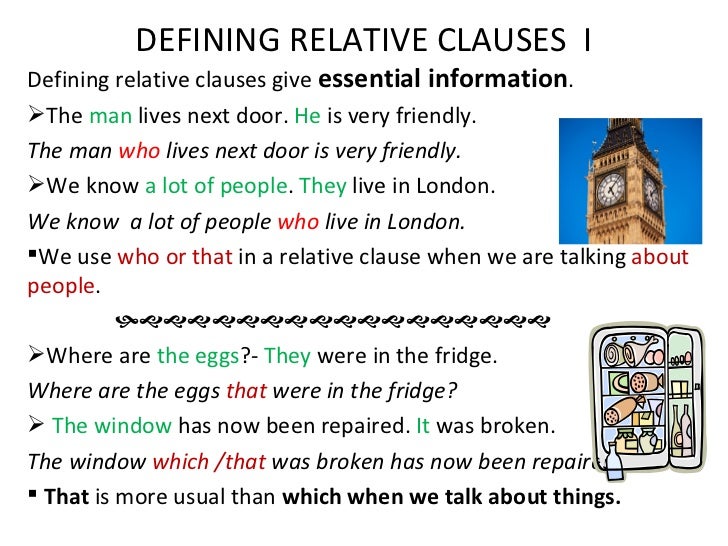Defining relative clauses

Form:
- Do not need commas to separate them from the rest of the sentence.
- Come after the noun they refer to.
- Can use which/that to refer to things.
- Can use who/that to refer to people.
- Can use where to refer to places.
Function:
A defining relative
clause gives us extra information about a noun. It cannot be removed from the
sentence without affecting the basic meaning.
We use defining relative clauses to give
essential information about someone or something – information that we need in
order to understand what or who is being referred to. A defining relative
clause usually comes immediately after the noun it describes.
We usually use a relative
pronoun (e.g. who, that, which,
whose and whom)
to introduce a defining relative clause (In the examples, the relative clause
is in bold, and the person
or thing being referred to is underlined.):
They’re the
people who
want to buy our house.
Examples:
- The movie which/that we saw last week was directed by martin Scorsese.
- The director who/that won the award wasn´t at the ceremony.
- We stayed in the place where we had our honeymoon.

Practice
Write some sentences using the defining relative clauses.
- They’re the people who/that she met at Jon’s party.
- Here are some cells which/that the researcher has identified.
- They’re the people who want to buy our house.
- Here are some cells which have been affected.
- They should give the money to somebody who they think needs the treatment most.

Video related to the topic: https://www.youtube.com/watch?v=un-JNzrxe0E
Comentarios
Publicar un comentario